When I first saw this strangely modified motorbike, I could not figure out why it had been modified or what it was used for.
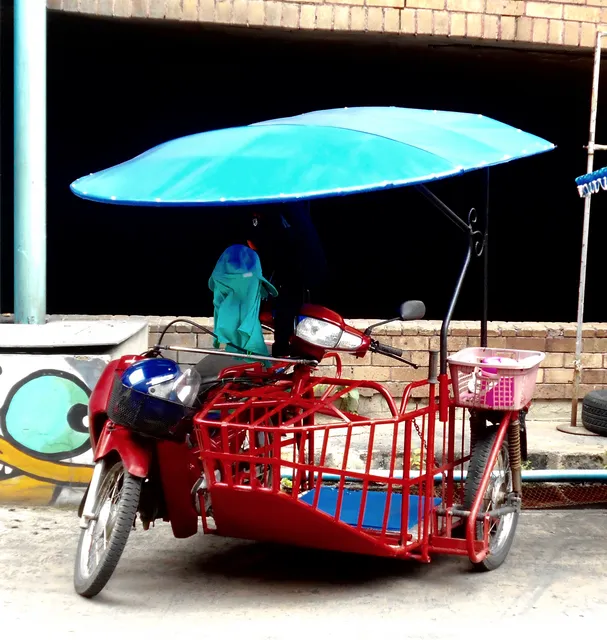
[Right-Click Here to Enlarge Photo]
Side-seat driver
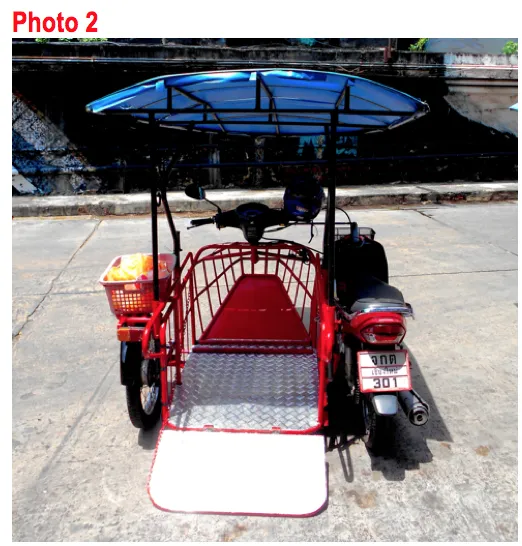
...
The relocated handlebar was connected to the steering column with a simple tie rod. But there was no seat in the sidecar. (See photo #2.)

World’s first 7-wheel vehicle *
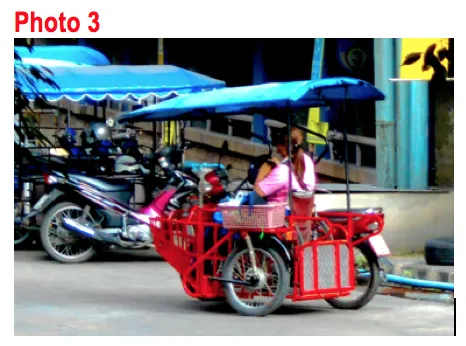
...
The floor of the sidecar is only about 15 centimeters above the road, providing a short, gentle slope for the “chairperson” to climb.

A few days later, I saw another “wheelchair-friendly motorbike” driving down the street, and was able to take a quick snapshot as it rode by. (see photo #4)

Nothing special, just a common-sense improvement
In Thailand and most of Southeast Asia, a motorcycle sidecar is a standard form of transportation, for both cargo and people. (See photos #5 and #6.)
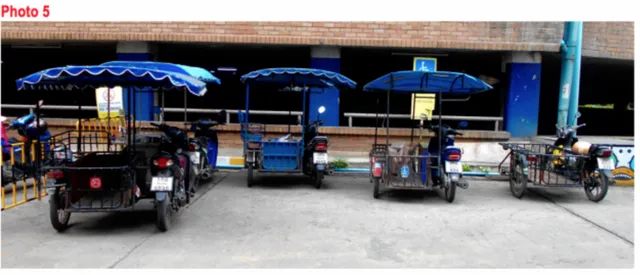
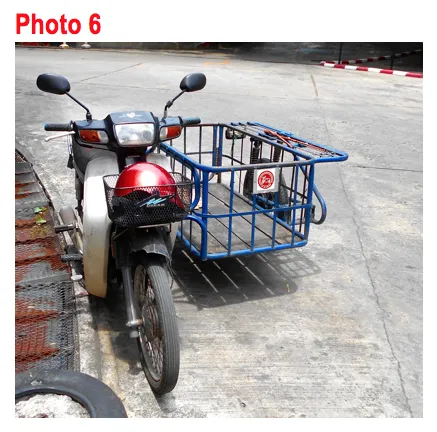
Such jerry-rigged bikes are very common here, carrying everything from fruits and vegetables to animals and people – and a whole lot more .

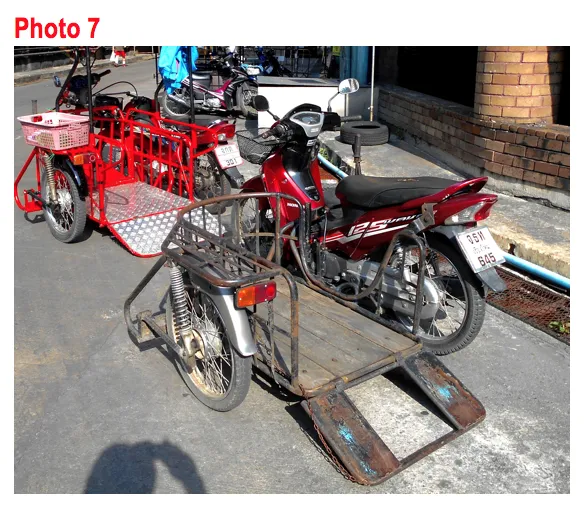
Also, see the older bike in photo #7, which also has a wheelchair-accessible sidecar, but whose handlebars have not been modified. The driver can “park” her/his wheelchair on the sidecar, then move over and sit on the bike’s saddle.
...
Either the gears and brakes have been modified, or the driver has enough movement in his feet to be able to operate the standard functions on such a bike.

Ride on. Ride easy.
In developed countries, certain cities have public “Wheel-Trans” systems, but many of them are inefficient and expensive. Therefore, it was great to see that the locals here in Southeast Asia have devised this simple and very effective solution. Ride on. Ride easy.

* For those of you who are as poor at math as I am, simply do the following addition. One motorbike (2 wheels) plus one sidecar (1 wheel) plus one wheelchair (4 wheels) equals 7 wheels. I think.


This is my entry in @juliank’s Vehicle Photography contest.


